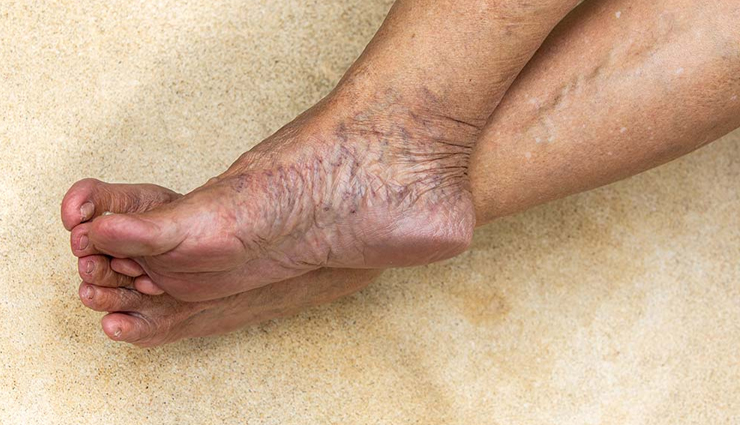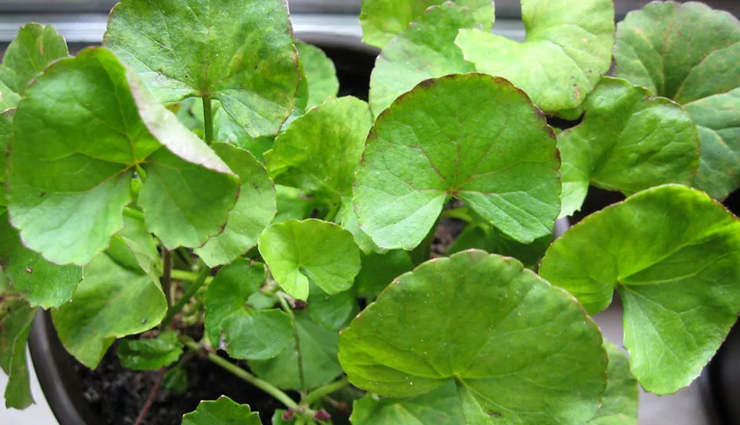4 Home Remedies To Treat Varicose Veins

Common varicose veins symptoms are a feeling of heaviness in the legs, itching, muscle cramps, and swollen legs. Varicose veins symptoms also include blueish marks that you can clearly see on your lower body, which is a result of swollen veins. These skin changes occur due to myriad causes such as:
- not being active
- having to be on your feet without a break for a prolonged period of time
- having health conditions like type 2 diabetes.

The Gotu kola herb has many positive impacts on your body and is a treatment for a number of health conditions such as sore throats, sneezing, and headaches. It is also a well-known varicose veins treatment in Ayurveda. Also known as Asiatic pennywort, this herb is rich in minerals like iron. Iron can boost your blood circulation in a number of ways. Primarily, it does so by removing the plaque and preventing build-up, which ensures that the blood circulation is smooth.
Smooth and boosted blood circulation also normalizes blood pressure. Regulated blood pressure helps keep varicose veins at bay. Gotu kola is also rich in antioxidants that can help repair the damage to the configuration of your arteries, veins, and capillaries. As a result, this herb can boost your body’s creation of collagen, a protein that supports all your body’s tissues and skin.
Cultivated in India, Manjistha is another powerful herb for varicose treatment. It has a high number of anti-inflammatory properties that can help reduce the swelling in your lower legs. This reduced swelling helps improve the appearance of varicose veins. Manjistha also helps purify your blood and improve your blood circulation.
In the ayurvedic sense, this herb helps treat varicose veins by balancing your pitta dosha. With this herb as the main ingredient, you can make a paste and apply it to the affected area by following these steps:
- Use the stem of the plant to create a powder
- Mis the powder with aloe vera gel to make a paste
- Apply it on the skin affected by varicose veins
- Make sure that you apply a thick layer
- Let the mixture dry in order for your skin to absorb the nutrients.
The reason why sariva roots are a part of varicose veins treatment in Ayurveda is that they have properties that can help relieve pain and boost complexion. The extracted sariva roots can be used in two different forms as an ointment or as a tonic. In the form of an ointment, the preparation is spread onto the skin affected by varicose veins. The ointment can make the skin tone even and relieve irritation.
To make the ointment, you can follow these simple steps:
- Crush the sariva roots into a powdered form
- Add water to have a consistency that resembles a paste
- Directly apply it to the affected skin
The tonic made from sariva roots helps purify your blood and regulate blood circulation. Sariva roots tonic eliminates Ama toxins from your blood in order to purify it.
Eranda, also known as castor bean, is an ancient treatment for varicose veins because of its ricin component. Eranda, a ricin-based bioactive compound, is mainly used as varicose veins treatment because it can relieve the blood clots in the affected area and reduce inflammation. Eranda is a product derived from castor oil and clears out the dark spots caused by varicose veins.
Other than being used for varicose veins treatment, it can also be a remedy for other injuries. To use eranda, follow these simple steps:
- Warm castor oils before using it (Make sure it is warm and not hot)
- Gently rub it over the affected area
- Ensure that you rub in circular motions
- Do this repeatedly for a few minutes
- Do not clean the areas and instead let your skin absorb the oil